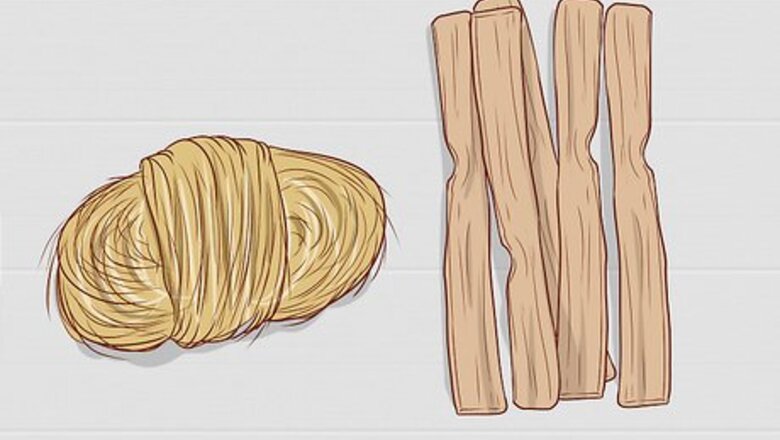
views
Keeping a Fire Burning Outdoors
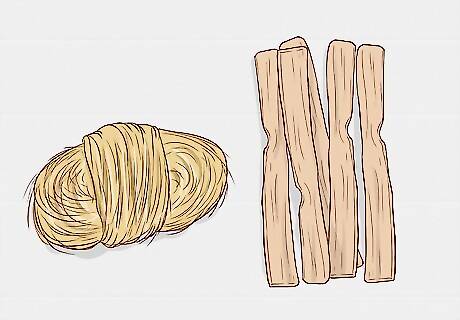
Get tinder and kindling. Tinder and kindling are small bits of wood, twine, or paper that get your fire going easily. Tinder is the material that will burn easily even with a small spark, making your fire start. Kindling is more substantial and will sustain your fire. You need both to make a good, durable fire. Good tinder materials: Newspaper, cotton swabs, and toilet paper work well if you have them at your campsite. If you need more natural materials try dry leaves, Cattail fluff, and Birch bark. Good kindling materials: Dried twigs, small, thin pieces of wood like sticks and broken tree branches. Dried leaves also work well. Keeping a fire burning is a cycle. Start with tinder, then add kindling, and finally wood. To keep your fire from going out, you’ll have to repeat the process throughout. If you go all out with bigger pieces of wood, you're probably going to need to commit yourself to a big fire that might last more than you want it to.
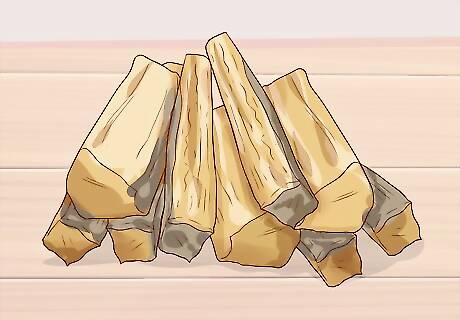
Use dry firewood. All the wood you use to build your fire should be completely dry. If there's any moisture left in the wood, it will be harder to keep a fire going. Instead, you might end up with a pile of smoking wood. If dry wood is not available, use extra kindling and tinder to combat any moisture. Stay away from recently chopped trees, as they have a lot of water still and won’t contribute to a sustaining fire. Seasoned firewood is the best, because it has been left to dry out for months or even years. If firewood has been seasoned properly, it will catch quickly and sustain a nice burn. When outdoors at a campsite or in the woods, look for fallen logs, or find an older tree to chop down. Oak and birch trees are abundant in the United states and are nice, hardwoods which can burn hot, but allow for a longer, sustained fire.
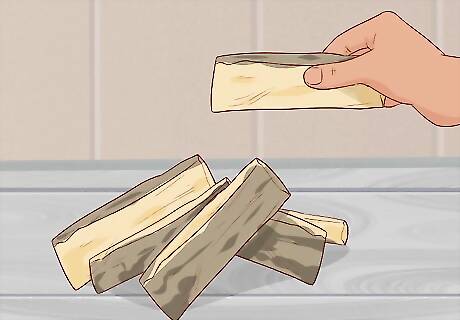
Start with softwood, sustain with hardwood. Weigh the options of using Hardwood vs. Softwood. Softwood is good for building up a fire, and hardwood will help you keep the fire going. Softwoods like pines and firs are easier to light but burn down quickly. If you’re trying to keep a fire going that’s burned down, add softwood to quickly draw a larger flame. Hardwood is harder to light when starting a fire, but lasts for a very long time, and burns with more heat. A solution to keeping your fire burning is to start the fire with softwood and switch to hardwood when you have a good, stable flame with some embers.
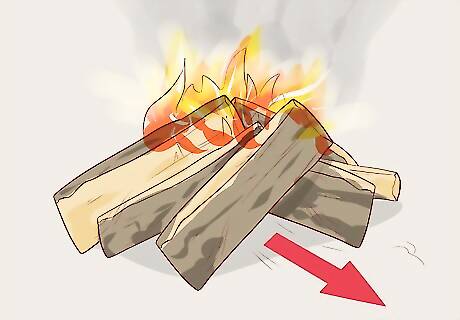
Add oxygen to fan your flames. Make sure the fire has enough ventilation, preferably from all sides. This can be obtained by building your fire on top of a grate if you have one. Put some paper product (such as newspaper) in the middle of your fire, on top of the grate before placing your wood. Stack the new firewood with a lot of space between the logs to get proper ventilation. If there's not enough oxygen or the campfire collapses, the fire will probably run out quickly. Frequently add more tinder and kindling to the open spaces between your logs. Blow on your fire. This is especially useful when you are just lighting the fire, to make it bigger. If you need to quickly restart a fire that’s gone out, gather up all your embers into a pile. Use your embers as a bed to stack on more tinder and kindling. Then, when you see a flame start to rise, add more wood. Use softwood if possible.
Keeping a Fire Burning in the Rain
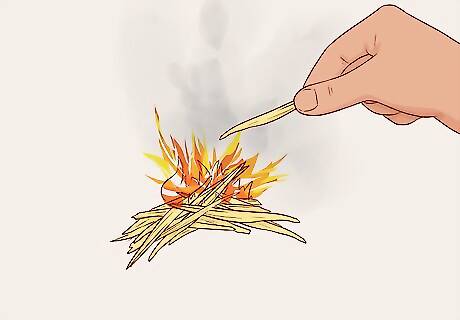
Start small. If it’s raining, or has recently rained and you don’t have access to dry firewood, it’s still possible to keep your fire burning. It just takes more effort and patience. Focus on building up a small flame in one area of your fire pit. The larger the wet area and material, the harder it will be to create enough heat for a sustainable fire. Use extra tinder and kindling. Don’t try to light a whole log just yet. Work on building a flame with paper and sticks. Birch trees have good bark for quick burning even when it’s raining as the bark has natural oils which repel moisture. If you can, place a tarp or something over your fire to block any rain. Just make sure it’s enough to prevent scorching or catching fire.

Wrap your wood in a towel before trying to burn. Use a dry towel or even dry clothes to wrap all of your wood and burning materials in. Damp the wood down and try your best to suck up or get rid of as much moisture as possible. If you suspect you may encounter rain, grab a canister before you go out and fill it with dry twigs, pine cones and needles. An oatmeal tin works great for storing small kindling and will keep it dry. When burning a fire outdoors, it’s always a good idea to have extra logs which you keep wrapped up just in case of rain.
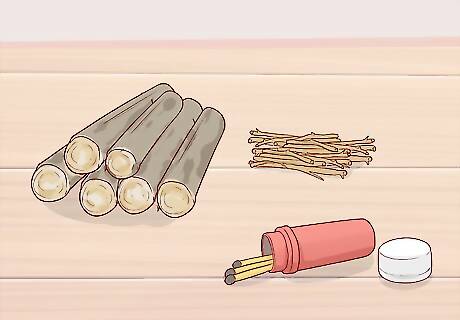
Use smaller logs, sticks, and anything else at your disposal. A grouping of smaller logs and kindling will be easier to light individually than one large log. In addition, you can try to light anything that will burn to get your fire started, or keep it going. Waterproof matches, a lighter, or flint and steel are your best best for sparking a flame. Foods that have a lot of carbohydrates can also be used as fuel in a pinch. Foods like chocolate and marshmallows work well. If you have a hatchet or other way to split logs, use it. Split logs down the middle to expose the dry area. Stand the logs up and face the dry bark towards the flame.
Keeping a Fire Burning Indoors
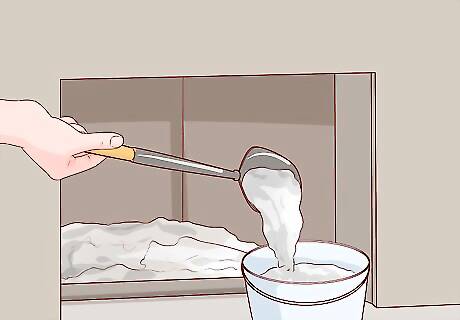
Remove any excess ash from your fireplace before building a fire. An Ash bed of 1-2 inches should always be maintained, this helps protect the floor of the firebox and will also assist in catching embers and radiating heat. Excess ash in the base of your fireplace can pile up and hamper any new material from being able to burn quickly and properly. Excess ash can also be a potential health hazard.

Stoke your fire regularly. If the fire seems to die out, use a long stick or a fire poker to move the logs around. You should also blow on them to provide a burst of oxygen. Keep working on the fire until it seems to be stable again, if you neglect it, it will go out. Use your poker to keep your coals together. Red, hot charcoal burns hot and will provide enough heat to quickly light tinder, kindling, and softwood. Coals will get hotter and hotter as you accumulate them with the fire poker/stick and retain plenty of heat for a long time. As the wood burns down to charcoal, make the charcoal glow red by poking and blowing air onto it. Then add on some more tinder, kindling and firewood.
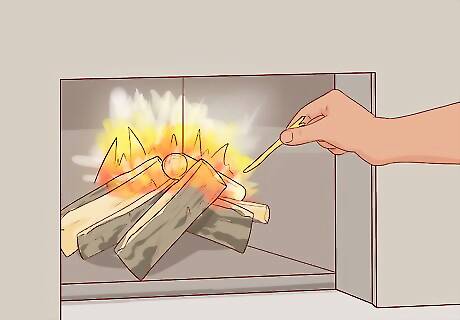
Add kindling and tinder regularly. Sometimes, when burning a fire in your fireplace at home, parts of your logs may not get hot enough to catch fire. To keep your fire burning longer, frequently add more kindling and tinder before adding logs to create more flames and heat, helping your logs burn. If you have an elevated grate in your fireplace, place your kindling and tinder under the grate so that the flames can raise up beneath the logs. If you don’t have space under your logs, stuff the material in between the logs with a poker.
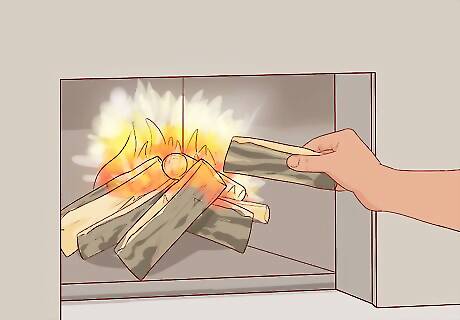
Add Hardwood logs. Place new logs on your fire so that there is still space for the fire to breathe. You don’t want to smother what fire you have. Larger hardwood logs are great for sustaining an already burning fire. If the fire is hot enough, the hardwood logs won’t take too long to start burning. If your fire is dying out, mix some softwood logs in as well to quickly draw a larger flame.


















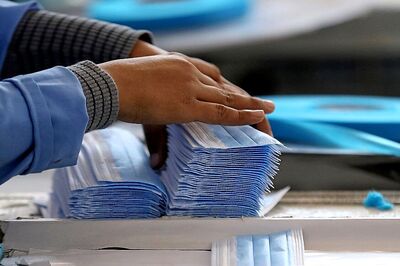

Comments
0 comment